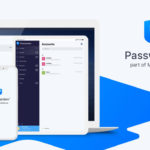ERP stands for Enterprise Resource Planning. It is a system or software application that helps to combine and amalgamate data and functionality of other separate software systems. They are usually used in accounting, donor databases, product inventory, and so on. The ERP systems can use the web to communicate with different software platforms from multiple vendors or can be just a single app that carries all the functions for a certain organization or a business.
Is your business using an ERP system and you are wondering what are the tips that will help you to have the best possible ERP user experience design? Well, today I am sharing them with you!
Make your ERP system as simple as possible.
These systems are really complex since there are tons of screens and modules linked together to provide you with an integrated outlook of your operations. By installing tools that will help users to get where they need to get in an instance, you will reduce the chances of getting them angry and impatient and will increase their satisfaction and confidence in the app. As a result of the minimalist look, everyone will be able to run their operations smoothly. What’s more, it elevates productivity and accelerates the task completion cycle.
Personalize your ERP system to enhance user experience.
When users have the possibility to personalize the system according to their preferences, they are bound to increase their job performance. They will be able to customize everything according to their role and requirements and will have a sense of being at home. It will be like logging into their favorite application that answers their needs to their taste. This is how users will enjoy their experience to the fullest and you should definitely aim to achieve a satisfying user experience.
Try to improve the ERP system usability.
Systems that have high usability will help you to cut training time. At the same time, it will boost organizational performance. Companies that have incorporated the ERP have cut the time they spend on training of new employees and have accelerated the adoption of new systems.
Provide role-based training.
On one hand, there are users that will complete some straightforward tasks, and on the other hand, there are users that will need to gain a deeper understanding of the system’s functionality in order to perform tasks that are more complex. It is of crucial importance to provide the users with role-based training, so they will be able to navigate the system according to their needs with ease.
Once you do that, do not stop there. Systems will get upgrades from time to time, so regular trainings will help both old and new employees to make their software practices better.
Tackle errors instantaneously.
Every software faces errors from time to time. Remember to tackle the ones you face immediately, so they do not turn into failures.
To sum up, even though large corporations mainly used the ERP systems in the past, today more and more small businesses find them beneficial too. They help carry out functions effortlessly and are great for cost savings in so many ways. I hope that these tips will help you improve your ERP user experience. All of this results in user engagement, profitability, and a boost in productivity.




Leave a comment
Have something to say about this article? Add your comment and start the discussion.